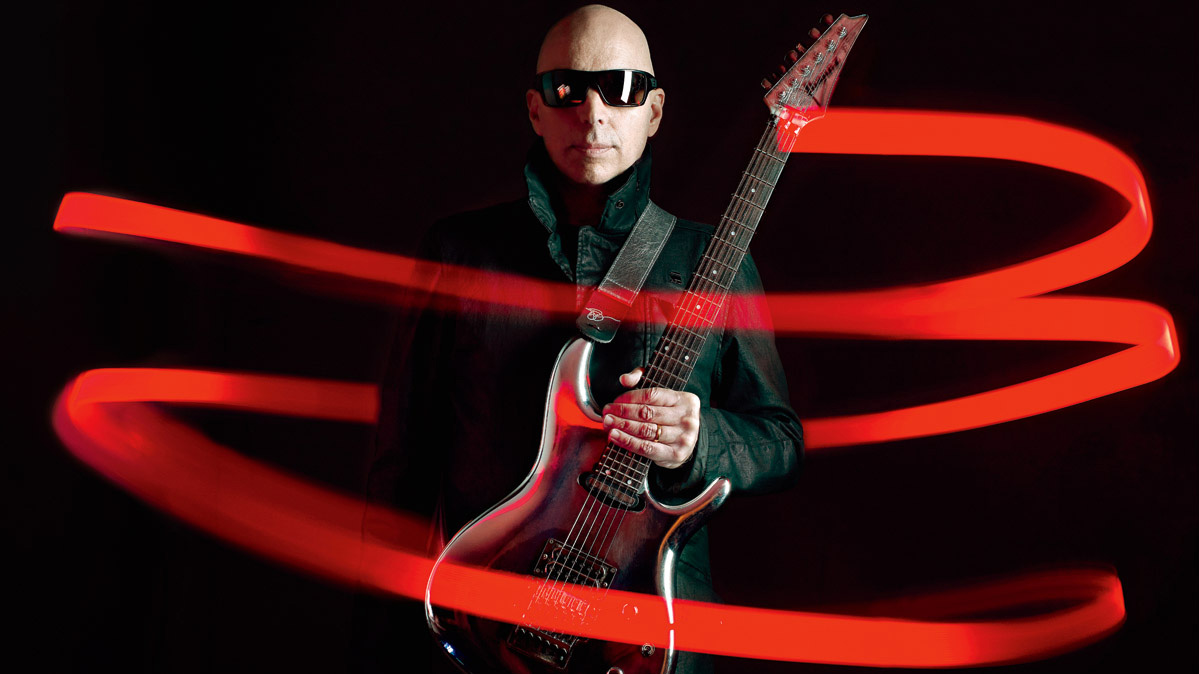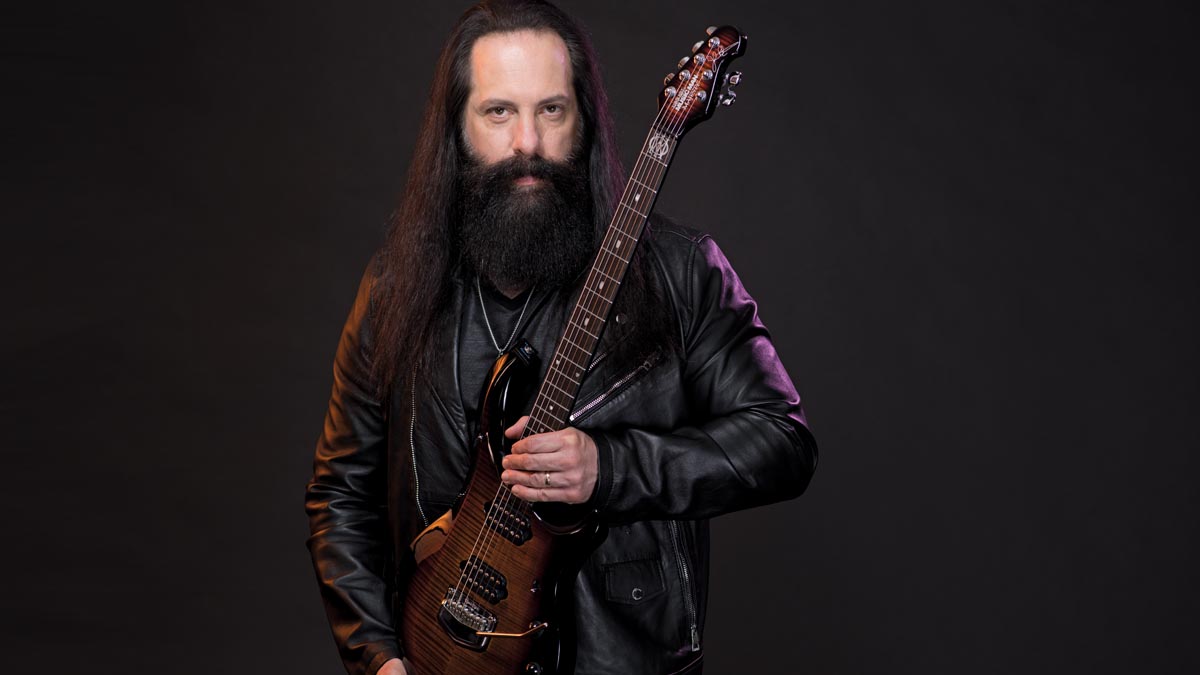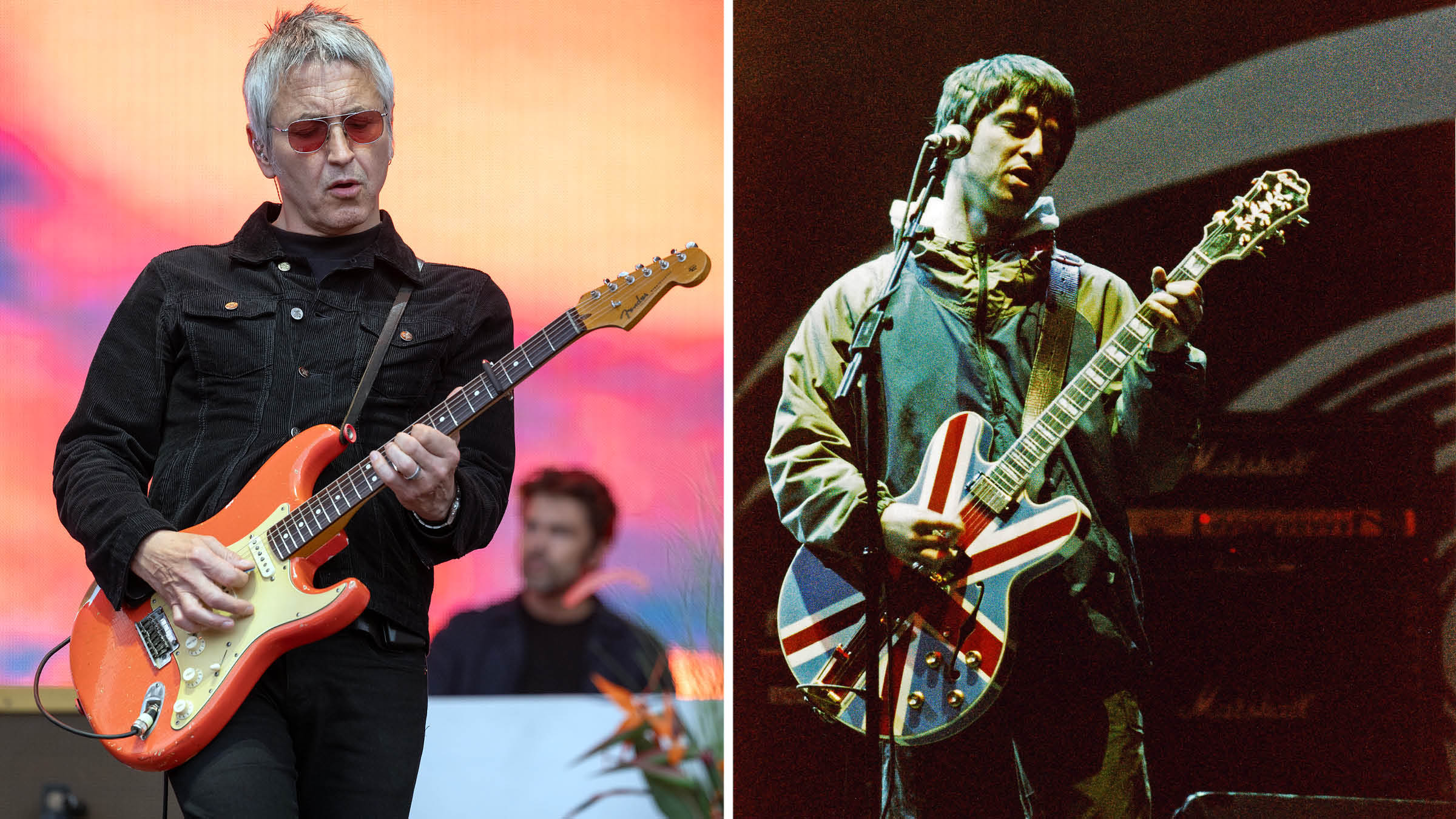40 guitarists who changed our world since 1980
The players who revolutionized guitar technique and tone over the past 40 years
11. James Hetfield & Kirk Hammett
WHAT THEY DID: In the 37 years since Metallica’s explosive 1983 debut, Kill ’Em All, Hammett and Hetfield have established themselves as metal’s quintessential guitar tar alliance. To this day, the titans of thrash continue to develop as artists, showing an uncommon ability to continually reinvent themselves in a genre where evolution is rarely evident.
I don’t care how much technology ever exists – nothing can duplicate the sheer power and feel you get from standing in front of your amp and bashing on your guitar
James Hetfield
Eschewing spandex, hairspray and other trappings of Eighties hair metal, Metallica scored a direct connection to its testosterone-ravaged audience with albums like 1983’s Kill ’Em All and 1984’s Ride the Lightning. Nothing about the group seemed phony – neither its look, ideology nor, more important, sound.
Hetfield played buzz-saw guitar like a disgruntled logger jacked on Jägermeister. And although Hammett’s internecine solos seemed, at times, to have been beamed from Mars, the point was clear: a Metallica that played together nicely would be a lie.
When they became a hit on the metal scene in the mid Eighties with Master of Puppets (1986) and …And Justice for All (1988), they literally changed the course of hard rock.
We would dare to say there isn’t a modern metal or punk band that hasn’t been influenced in some way by Hetfield’s revolutionary rapid-fire rhythm guitar or Hammett’s modally inspired guitar solos.
Hetfield’s lyrics were also a massive game changer, demonstrating that metal could take on socially relevant issues without diminishing its tremendous power.
12. Joe Satriani

WHAT HE DID: Shred was born on October 15, 1987, the day Joe Satriani released Surfing with the Alien. Satch took all the rock guitar virtuosity that had gone before – Hendrix, Van Halen, Randy Rhoads, etc. – and brought it all a giant step further, adding a few new tricks to the lexicon of hot guitar moves and upping the land speed record for notes-per-nanosecond.
All the latest guitar news, interviews, lessons, reviews, deals and more, direct to your inbox!
‘Original’ is a weighty word, because you may think, Clapton did this, Hendrix did that, Van Halen did this, Vai did that…so what’s left? Your story – that’s what’s left
Joe Satriani
The course of rock guitar history was dramatically altered in 1987 by a nice Italian-American boy from the sleepy New York suburb of Carle Place, Long Island. Joe Satriani had given guitar lessons to Steve Vai and Kirk Hammett. He’d tried – and failed – to break into the big time with a new wave band called the Squares. It was only then that he turned his attention to recording instrumental guitar rock.
In 1986 he released a self-titled EP and full-length debut album, Not of This Earth, which garnered favorable attention in the guitar community but the record didn’t exactly set the world on fire.
That wouldn’t happen until Satriani’s third release, Surfing with the Alien, came out the following year. The record became the first rock guitar instrumental album to reach Billboard’s Top 200 Albums chart, achieving Platinum sales. The disc became the central manifesto of the then-nascent shred revolution.
Now-classic tracks like Satch Boogie, Surfing with the Alien and the Grammy-nominated “Always with Me, Always with You, set a new benchmark for blinding virtuosity, but also demonstrated how extreme technique could be deployed in the service of melodic integrity and solid compositional inventiveness. In this regard, Surfing with the Alien has never been topped.
13. Zakk Wylde
WHAT HE DID: With his bell bottoms, eye-catching bullseye guitars and screeching shit-kicker licks, Wylde was a fresh face on the guitar scene when he joined Ozzy Osbourne’s band in 1987 – a grungy, unbridled combination of Randy Rhoads’ skill and Jake E. Lee’s flashiness, yet clearly his own player.
I was clean shaven, 20 years old, weighed about a buck-fifty. I was the closest thing those guys were gonna see to Farrah Fawcett
Zakk Wylde
After the death of Randy Rhoads in 1982, Ozzy Osbourne went through a string of guitarists but was unable to find one who could serve as a long-term bandmate. What he needed wasn’t just some G.I.T. machine; he needed a partner.
From the outset, nothing about Zakk Wylde made any sense: not his birthplace (New Jersey), his bellbottoms, his allegiance to Lynyrd Skynyrd nor his full-time gig as quality control for the Miller Brewing Company (we kid – Wylde actually worked in a gas station before turning pro rocker).
But it all came together in his playing, a ferocious blend of seismic metal, dizzying runs and even some Southern boogie when Ozzy wasn’t looking.
Following the release of No Rest for the Wicked in 1988, Wylde would go on to serve as Osbourne’s right-hand man for many years to come and grow into one of the most dynamic, influential and respected guitar players in modern hard rock and metal.
14. John Petrucci

WHAT HE DID: His deep dedication to guitar mastery enabled him to defy the notion that prog-rock died out with wide lapels, daisy appliqués and other artifacts of the Seventies. He launched Dream Theater in 1985, and the band has since become the standard bearer of the prog-metal scene.
The way I challenge myself to grow and stay fresh is by intentionally constructing things that I can’t play when we do an album
John Petrucci
There are those who swear that prog-metal pioneer John Petrucci has a few extra fingers on both hands that he craftily keeps hidden during photo shoots.
How else can one explain the man’s ability tomake six- and seven-string electric guitars generate quantum-shifted note clusters exceeding the speed of light?
Maybe it’s the six daily hours of practice he put in during his formative years, and his rigorous studies at Berklee, where he mastered the intricacies of sweep and alternate picking – regardless of how it happened, few players can switch from Zeppelin übercrunch to Al Di Meola–style muted picking with such finesse.
Petrucci’s guitar work with Dream Theater, Liquid Tension Experiment and as a solo artist exemplify the present-day ideal of extreme guitar discipline.
15. Kerry King & Jeff Hanneman
WHAT THEY DID: In 1982, while most L.A. metal bands were spending as much time on hair care as music, Slayer guitarists Hanneman and King perfected a style of hyperspeed, muted double picking and catchy minor-key riffing that remains hugely influential nearly 40 years later
We didn’t go out of our way to sound particularly different, except that it was us writing it, I guess
Kerry King
Slayer guitarist Kerry King says that when the group went into the studio to make what would become its thrash masterpiece, 1986’s Reign in Blood, they were “just a bunch of angry punks making a record we thought was cool.”
What they didn’t realize was just how cool it would turn out to be. “We were kids, like 22 years old,” says King. “We thought we made a real good record, and that we’d outdone our last one. That’s all it was about back then.”
But Reign in Blood did far more. With its leaden rhythms, King and Hanneman’s bludgeoning riffery and some of the most morbid images this side of Friday the 13th films, the album raised the bar for thrash, announcing loudly – and proudly – that Slayer had arrived as a leader of the form, on par with the more highly touted metal peers such as Metallica, Megadeth and Anthrax.
16. Randy Rhoads
WHAT HE DID: Rhoads infused the explosive, fleet-fingered, yet largely blues-based guitar style of Eddie Van Halen with classical music–inspired melodies and runs and an advanced knowledge of music theory. His playing on Blizzard of Ozz classics like Crazy Train, Mr. Crowley and I Don’t Know raised the bar for guitar shredders in the Eighties and beyond.
I was really young, around 12 or 13, when I started playing rock – and where I came from, the big thing was playing parties. I couldn’t wait until the weekend so I could go out and play
Randy Rhoads
METAL GUITAR’S GOLDEN-haired innocent, Rhoads’ brief career is the stuff of legend. The studious schoolboy who came out of Quiet Riot and the Hollywood hair-band scene and ultimately hitched a ride on Ozzy Osbourne’s crazy train, Rhoads brought a new level of virtuosity to metal guitar before his untimely death in a plane crash at the age of 26.
Carefully trained by his music teacher mom, Rhoads had a flair for modal improvisation, tapped arpeggios and meticulously doubled leads, and set the stage for the Eighties shred boom.
“Most heavy metal is not very melodic in nature,” Rhoads told GW in 1982. “It’s often minor in tone so you can use a lot of minor thirds in your lead breaks. That automatically sounds classical. Leslie West was one of my favorites because he used classical ideas with feeling. He was melodic but mean.”
17. Trey Anastasio
WHAT HE DID: In many ways, Phish picked up where the Grateful Dead left off following Jerry Garcia’s death in 1995, building a huge and rabidly dedicated following through hard touring, word of mouth and fanatical tape trading.
Since then, Phish frontman Anastasio has been smack dab in the middle of some of the most exploratory rock and roll played in modern times.
Music is like this portal into another world – the world of truth
Trey Anastasio
Trey Anastasio and his Phish bandmates picked up the tradition of psychedelic jam-oriented bands like the Grateful Dead and combined it with progressive rock to create their own potent brew.
Despite protestations that he’s not into playing solos, Anastasio is, in fact, a certified guitar hero, one who succeeds at filling arenas and festival lawns with jam-band aficionados who greet Mixolydian licks with screams of glee.
In the process, he has turned a whole generation of listeners onto the ecstasy that is available to those who know how to play really well and simply to wail with focused purpose.
18. Brian Setzer
WHAT HE DID: He used his Gretsch 6120 to revitalize rockabilly with the Stray Cats in the Eighties and revive swing with the Brian Setzer Orchestra in the Nineties. That paved the way for the surf-rock resurgence from circa-1997 through the 2000s.
Rockabilly music paralleled punk’s energy and feeling, but the players were much better
Brian Setzer
Eighties, when synth-dominated music ruled the airwaves, Brian Setzer and the Stray Cats spearheaded an unlikely rockabilly revival that rocketed the Long Island band to the top of the charts.
Taking the music of Eddie Cochran, Gene Vincent and Buddy Holly and injecting it with a punk attitude and burning guitar solos that made even metalheads take notice, the Stray Cats resuscitated a genre that had been dormant since the late Fifties.
No mere revivalist, Setzer played with a sophistication and technique that rivaled that of the most esteemed rock guitar virtuosos. His solos are distinguished by fluent jazz chops, intricate fingerpicked arpeggios and runs, and raunchy double stops, while his rhythm work reveals his deep knowledge of chord melody.
Setzer’s impact on the guitar community has spanned across multiple genres: if any musician in 2020 slicks their hair back and plays rockabilly, surf or full-on roots-rock, it’s because of what Setzer did in the Eighties and beyond. And did we mention he helped bring swing and jump-blues back in the late Nineties?
19. Joan Jett
WHAT SHE DID: Served as the founding guitarist of legendary Seventies teen girl group the Runaways and rose to stardom in the Eighties fronting the long-running rock act the Blackhearts.
You have to be really dedicated to this as a lifestyle. It’s hard to live a double life and hold down a nine-to-five job and be in a touring band
Joan Jett
“I’m a barre-chord basher,” says Joan Jett. “That’s pretty much what I do.” It’s what she’s been doing since 1975, when a teenaged Jett, an East Coast native transplanted to Los Angeles, formed the seminal hard rock outfit the Runaways.
The band, which included co-guitarist Lita Ford, drummer Sandy West and corseted sexpot singer Cherie Currie, released four studio albums over the course of their brief career (with Jett assuming lead vocals for the last two), and racked up one enduring hit, the Jett-penned Cherry Bomb, from their self-titled 1976 debut.
While the Runaways’ punky glam pop failed to garner them substantial Stateside fame, they have since come to be regarded as rock and roll trailblazers of a sort, as well as been credited as a significant influence on new generations of female guitar-based acts.
Following the Runaways’ dissolution in a mess of drugs, ego clashes and mismanagement, Jett, in characteristic form, continued to bash her way through the largely male-dominated rock landscape.
She launched a solo career, founded her own record label, Blackheart (a word she also appropriated for the name of her band, Joan Jett & the Blackhearts) and proceeded to rack up single successes like 1981’s Bad Reputation, 1988’s I Hate Myself for Loving You and 1982’s I Love Rock ’n Roll, her smash hit cover of the 1975 Arrows original.
Interestingly, two years before recording I Love Rock ’n Roll with the Blackhearts, Jett cut a version of the song with a band that included ex–Sex Pistols Steve Jones and Paul Cook.
20. Dave Murray & Adrian Smith (Iron Maiden)
WHAT THEY DID: For the past 40 years, the guitar tandem of Dave Murray and Adrian Smith has been synonymous with Iron Maiden’s galloping riffs, dueling leads and three-part harmonies.
There was this chemistry between me and Adrian that went beyond the music
Dave Murray
Along with Judas Priest’s Glenn Tipton and K.K. Downing, who worked a similar twin-lead attack, the duo of Murray and Smith was considered the top British metal guitar tandem of the Eighties.
First pairing off for 1981’s blistering Killers, Murray and Smith quickly proved that they could play harmony leads and interlocking riffs as if linked by one brain, and do it with a speed and aggression that put most punk bands of the era to shame.
As a teenager, Jeff Kitts began his career in the mid ’80s as editor of an underground heavy metal fanzine in the bedroom of his parents’ house. From there he went on to write for countless rock and metal magazines around the world – including Circus, Hit Parader, Metal Maniacs, Rock Power and others – and in 1992 began working as an assistant editor at Guitar World. During his 27 years at Guitar World, Jeff served in multiple editorial capacities, including managing editor and executive editor before finally departing as editorial director in 2018. Jeff has authored several books and continues to write for Guitar World and other publications and teaches English full time in New Jersey. His first (and still favorite) guitar was a black Ibanez RG550.

